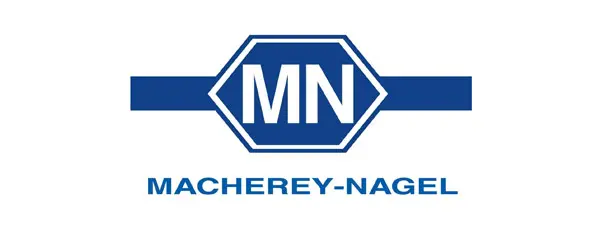| Column-Name | Phase | Polarity | USP | I.D. | Film Thickness | Tmax[1] |
| Optima® 1 | Dimethylpolysiloxane (100%) | Non-Polar | G1,
G2,
G38 | 0.10 mm
0.20 mm
0.25 mm
0.32 mm
0.53 mm
| 0.10, 0.40 µm
0.10, 0.20, 0.35, 0.50 µm
0.10, 0.25, 0.50, 1.0 µm
0.10, 0.25, 0.35, 0.50, 1.0,
3.0, 5.0 µm
0.50, 1.0, 2.0, 5.0 µm
| 300‒360 °C |
| Optima® 1 MS | Dimethylpolysiloxane (100%) | Non-Polar | G1,
G2,
G38 | 0.20 mm
0.25 mm
0.32 mm
| 0.20, 0.35 µm
0.25 µm
0.25 µm
| 340‒360 °C |
| Optima® 1 MS Accent | Dimethylpolysiloxane (100%) | Non-Polar | G1,
G2,
G38 | 0.20 mm
0.25 mm
0.32 mm
| 0.20 µm
0.25, 0.50 µm
0.25, 0.50 µm
| 340‒360 °C |
| Optima® 1 TG | Dimethylpolysiloxane (100%) | Non-Polar | G1,
G2,
G38 | 0.25 mm
0.32 mm
| N/A | 370 °C |
| Optima® 5 | Phenylmethyl-
/dimethylpolysiloxane (5%/95%) | Non-Polar | G27,
G36 | 0.10 mm
0.20 mm
0.25 mm
0.32 mm
0.53 mm
| 0.10 µm
0.10, 0.20, 0.35, 0.50 µm
0.10, 0.25, 0.35, 0.50, 1.0 µm
0.10, 0.25, 0.35, 0.50, 1.0,
3.0, 5.0 µm
0.50, 1.0, 2.0, 5.0 µm
| 300‒360 °C |
| Optima® 5 MS | Diphenyl-
/dimethylpolysiloxane (5%/95%) | Non-Polar | G27,
G36 | 0.20 mm
0.25 mm
0.32 mm
| 0.20, 0.35 µm
0.25, 0.50, 1.0 µm
0.25, 0.50, 1.0 µm
| 340‒360 °C |
| Optima® 5 MS Accent | Silarylene phase | Non-Polar | G27,
G36 | 0.20 mm
0.25 mm
0.32 mm
| 0.20, 0.35 µm
0.25, 0.50, 1.0 µm
0.25, 0.50, 1.0 µm
| 320‒360 °C |
| Optima® 5 HT | N/A | Non-Polar | G27,
G36 | 0.25 mm
0.32 mm
| 0.10, 0.25 µm
0.10, 0.25 µm
| 380‒400 °C |
| Optima® 5 Amine | N/A | Non-Polar | G27,
G36 | 0.10 mm
0.20 mm
0.25 mm
0.32 mm
0.53 mm
| 0.40 µm
0.35 µm
0.50, 1.0 µm
0.25, 1.0, 1.5 µm
1.0, 3.0 µm
| 300‒320 °C |
| Optima® XLB | Silarylene phase | Non-Polar | N/A | 0.25 mm | 0.25 µm | 340‒360 °C |
| Optima® δ-3 | Polysiloxane phase with autoselectivity | Mid-Polar | N/A | 0.10 mm
0.20 mm
0.25 mm
0.32 mm
0.53 mm
| 0.10 µm
0.20 µm
0.25, 0.50 µm
0.25, 0.35, 1.0 µm
1.0 µm
| 320‒360 °C |
| Optima® δ-6 | Polysiloxane phase with autoselectivity | Mid-Polar | N/A | 0.10 mm
0.20 mm
0.25 mm
0.32 mm
0.53 mm
| 0.10 µm
0.20 µm
0.25 µm
0.25, 0.35, 1.0 µm
1.0 µm
| 320‒360 °C |
| Optima® 1301 | Cyanopropyl-phenyl-
/dimethylpolysiloxane (6%/94%) | Mid-Polar | G43 | 0.25 mm
0.32 mm
0.53 mm
| 0.25 µm
0.25, 1.0 µm
1.0 µm
| 300‒320 °C |
| Optima® 1301 MS | Silarylene phase | Mid-Polar | G43 | 0.25 mm
0.32 mm
0.53 mm
| 0.25 µm
0.25, 1.0 µm
1.0 µm
| 300‒320 °C |
| Optima® 624 | Cyanopropyl-phenyl-
/dimethylpolysiloxane (6%/94%) | Mid-Polar | G43 | 0.20 mm
0.25 mm
0.32 mm
0.53 mm
| 1.1 µm
1.4 µm
1.8 µm
3.0 µm
| 280‒300 °C |
| Optima® 624 LB | Cyanopropyl-phenyl-
/dimethylpolysiloxane (6%/94%) | Mid-Polar | G43 | 0.32 mm | 1.8 µm | 280‒300 °C |
| Optima® 1701 | Cyanopropyl-phenyl-
/dimethylpolysiloxane (14%/86%) | Mid-Polar | G46 | 0.20 mm
0.25 mm
0.32 mm
0.53 mm
| 0.20 µm
0.25, 0.50, 1.0 µm
0.25, 0.35, 0.50, 1.0 µm
1.0, 2.0 µm
| 280‒300 °C |
| Optima® 1701 MS | Silarylene phase | Mid-Polar | G46 | 0.25 mm
0.32 mm
| 0.25, 0.50 µm
0.25, 0.50 µm
| 280‒300 °C |
| Optima® 35 MS | Silarylene phase | Mid-Polar | G42 | 0.25 mm
0.32 mm
| 0.25 µm
0.25 µm
| 360‒370 °C |
| Optima® 17 | Phenylmethylpolysiloxane (50 % Phenyl) | Mid-Polar | G3 | 0.10 mm
0.20 mm
0.25 mm
0.32 mm
0.53 mm
| 0.10 µm
0.20, 0.50 µm
0.15, 0.25, 0.50 µm
0.15, 0.25, 0.35, 0.50 µm
1.0 µm
| 300‒340 °C |
| Optima® 17 MS | Silarylene phase | Mid-Polar | G3 | 0.25 mm
0.32 mm
| 0.25 µm
0.25 µm
| 340‒360 °C |
| Optima® 17 TG | Phenylmethylpolysiloxane (50 % Phenyl) | Mid-Polar | G3 | 0.32 mm | N/A | 370 °C |
| Optima® 210 | Trifluorpropyl-methylpolysiloxane (50 % Trifluorpropyl) | Mid-Polar | G6 | 0.25 mm
0.32 mm
| 0.25, 0.50 µm
0.25, 0.50 µm
| 260‒280 °C |
| Optima® 225 | Cyanopropylmethyl-
/ Phenylmethylpolysiloxane (50%/50%) | Mid-Polar | G7/
G19 | 0.10 mm
0.25 mm
0.32 mm
| 0.10 µm
0.25 µm
0.25 µm
| 260‒280 °C |
| Optima® 240 | Cyanopropylmethyl-
/ Dimethylpolysiloxane
(33%/67%) | Mid-Polar | N/A | 0.25 mm
0.32 mm
| 0.25, 0.50 µm
0.25, 0.35, 0.50 µm
| 260‒280 °C |
| Optima® WAX | Polyethylene glycol | Polar | G16 | 0.25 mm
0.32 mm
0.53 mm
| 0.25 µm
0.25, 0.50 µm
1.0, 2.0 µm
| 240‒250 °C |
| Optima® WAXplus® | Polyethylene glycol | Polar | G16 | 0.25 mm
0.32 mm
| 0.25, 0.50 µm
0.25, 0.50 µm
| 260‒270 °C |
| Optima® FFAP | Polyethylene glycol 2-nitroterephthalate | Polar | G35 | 0.10 mm
0.25 mm
0.32 mm
0.53 mm
| 0.10 µm
0.25 µm
0.25, 0.50 µm
0.50, 1.0 µm
| 220‒260 °C |
| Optima® FFAPplus | Polyethylene glycol 2-nitroterephthalate | Polar | G35 | 0.25 mm
0.32 mm
| 0.25, 0.50 µm
0.25, 0.50 µm
| 250‒260 °C |
| Optima® BioDiesel M | N/A | N/A | N/A | 0.32 mm | N/A | 340‒360 °C |
| Optima® BioDiesel F | N/A | N/A | N/A | 0.25 mm | N/A | 240‒250 °C |
| Optima® BioDiesel G | N/A | N/A | N/A | 0.25 mm | N/A | 380‒400 °C |

 Macherey-Nagel Chromatography Catalogue
Macherey-Nagel Chromatography Catalogue